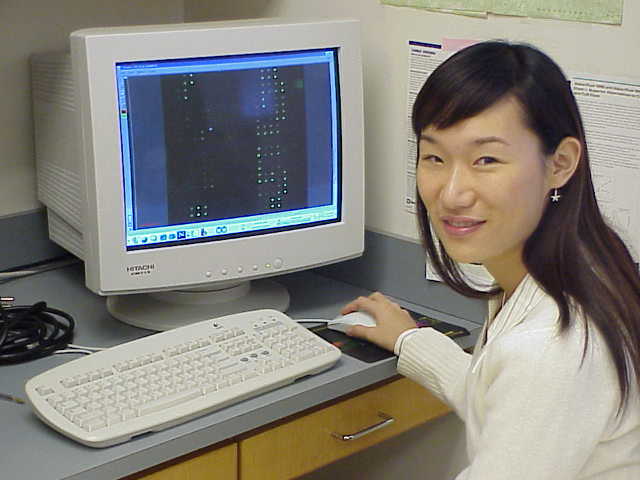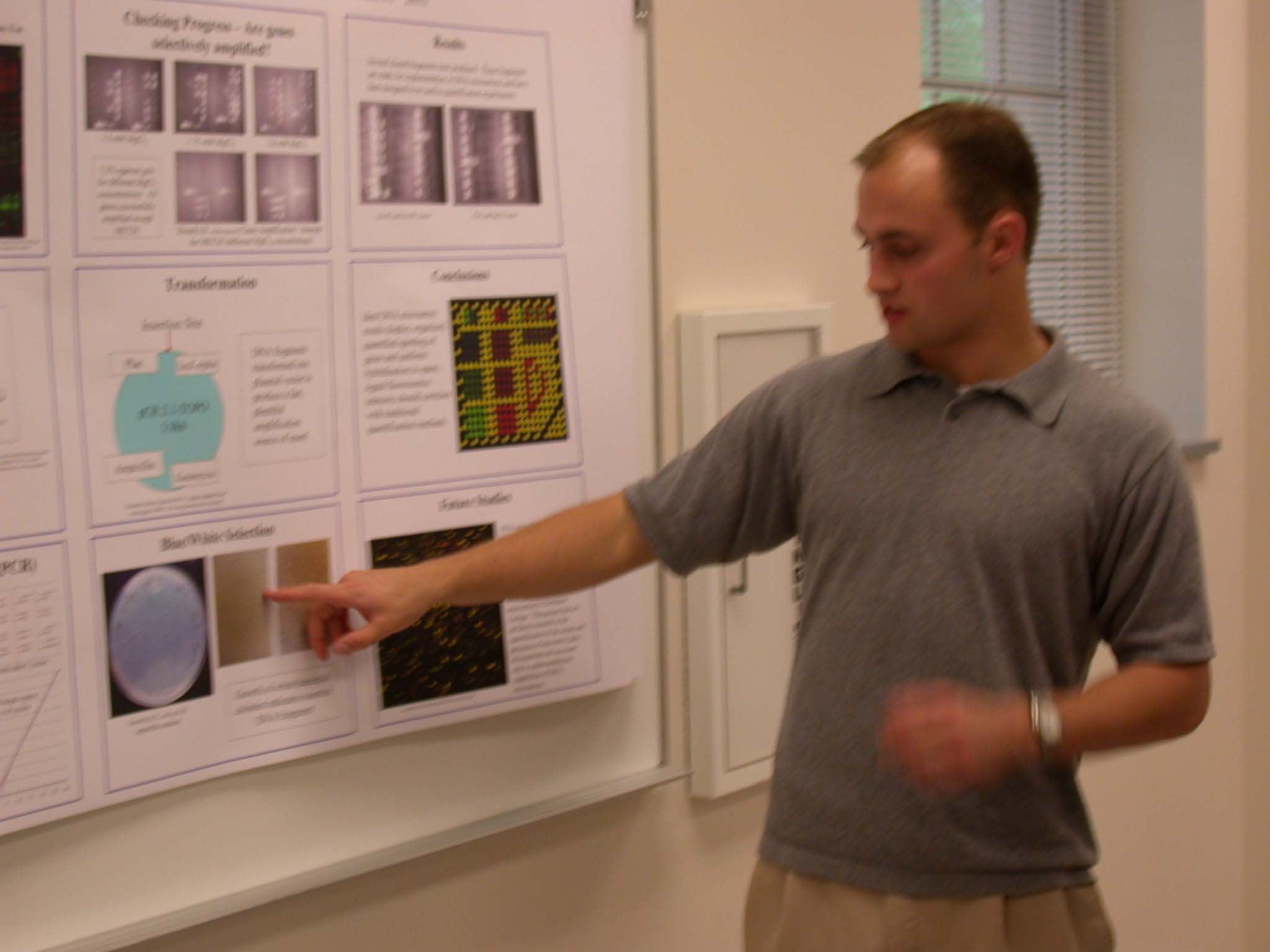![]()
Bar Code DNA Microarrays


Danielle Choi ('04), Peter Lowry ('03) and Jennifer Madden ('02)
Helped develop bar code microarrays for use at Davidson
Bar code microarrays allow the investigator to determine what role, if any, a gene has for growth of yeast in a particular condition. For example, you can knock out a gene that is responsible for zinc metabolism and without which a cell cannot grow properly - let's call that strain Zn-. Strain Zn- is grown in a flask with 499 other mutants, each with a different gene knocked out and replaced by the bar code tags and selectable marker as shown below. Each tag (one unique UpTag and one unique DownTag per knock out strain) is composed of 20 bases not found in yeast.
Bar Code Knockout Genes
A bar code microarray is printed with the 20mer oligos from all the UpTags and DownTags, two per gene. This produces a micorarray of about 12,400 spots, two for each of the 6,200 yeast genes. The idea is to compare growth rates of all the mutant strains when they are competing against each other in the growth condition of your choice. The two tags are flanked by PCR primer sites that will amplify all the unique tags simultaneously (red primer pair amplifies all UpTags, green pimer pair amplifies all DownTags).
Bar Code Experimental Design
If you amplify an UpTag from total genomic DNA of all 500 strains prior to growth and label it with Cy5, and amplify a new DNA prep after growth and label it with Cy3, you have two sets of probes that will produce ratios which reveal relative growth rates. Fast growers will have more Cy3 and produce the appropriate ratio; slow growers will do the opposite. If your Zn- strain is unaffected in this growth condition, the ratio of before and after should be 1.
Bar Code Data
Pioneering Glass Bar Code DNA Microarrays at Davidson
Work in Progress - but it does work!
© Copyright 2004 Department of Biology, Davidson College,
Davidson, NC 28036
Send comments, questions, and suggestions to: macampbell@davidson.edu